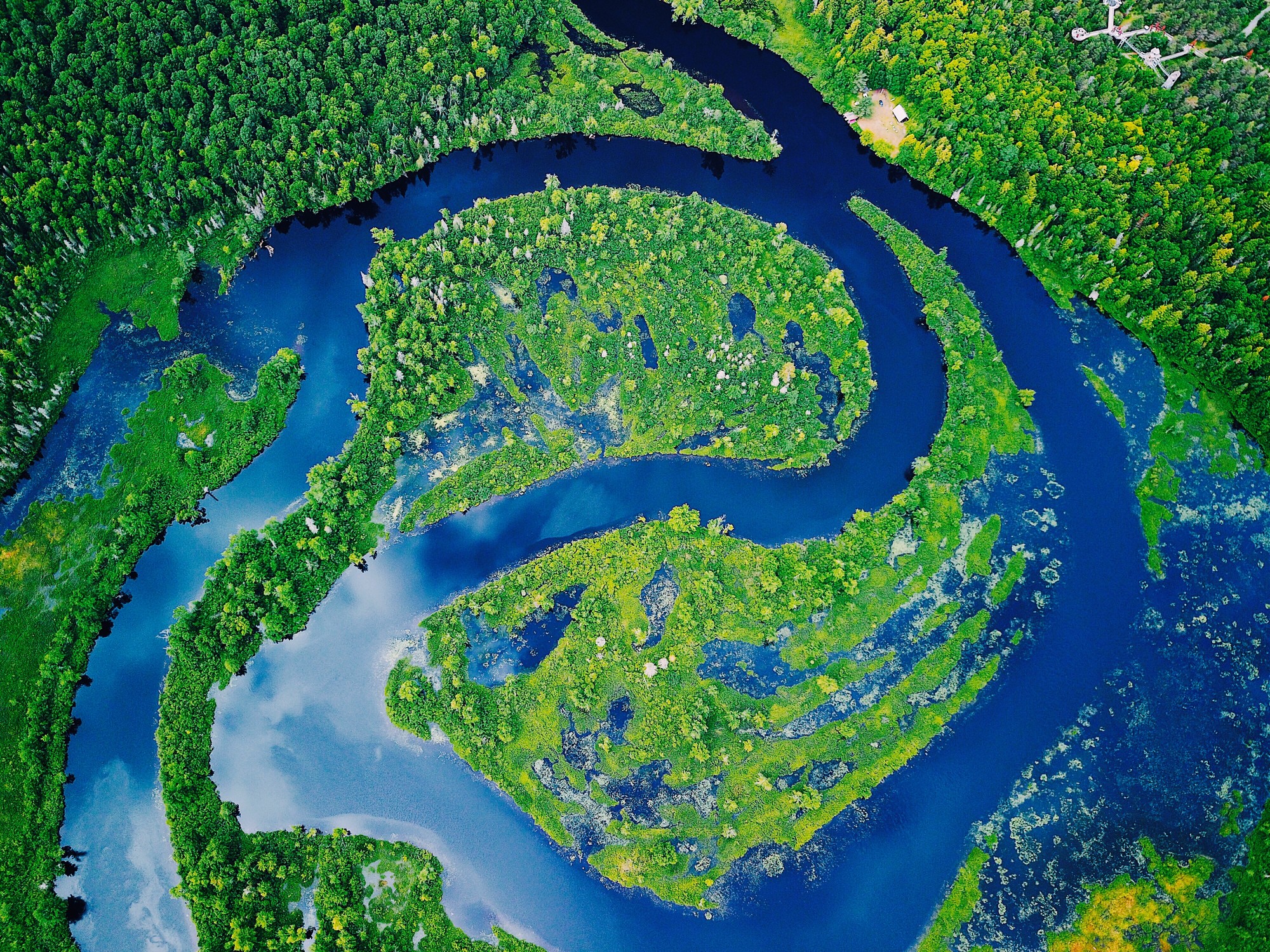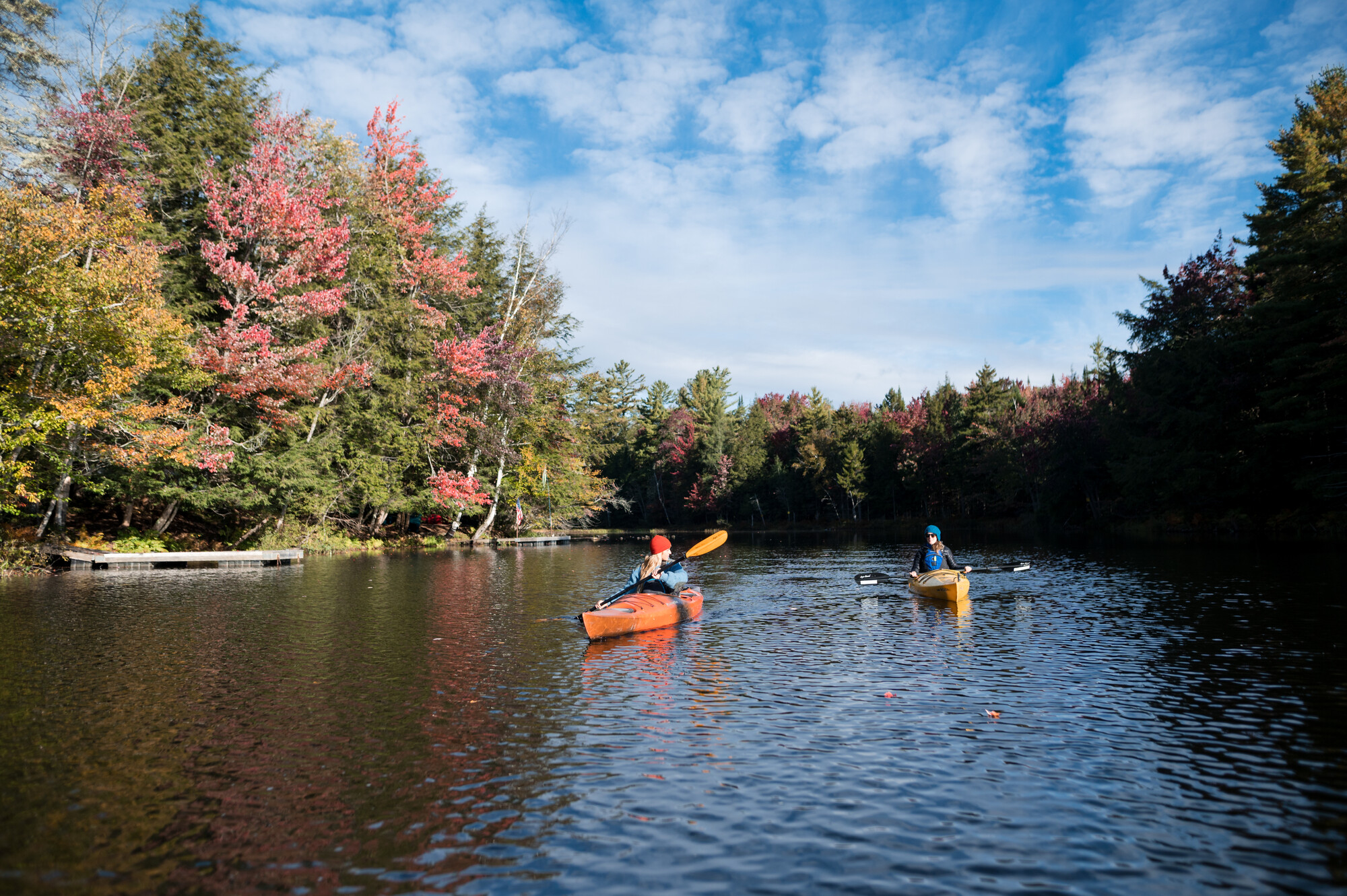
A Guide for Beginners
“If there is magic on this planet, it is contained in water.”
-Loren Eiseley
The Adirondacks are known for their breathtaking mountains adorning the horizon. But the waters of our lakes, rivers, ponds, and streams are equally cherished, and a paddle along these waterways is a rustic dreamworld. Gently floating along the pines alongside a loon as you watch the sun glisten upon the surrounding summits is hard to beat. Even better, the stillness of our waters make for a perfect spot for those who are inexperienced to learn how to paddle (while enjoying plenty of Adirondack zen along the way).

I had the opportunity to speak with Anne Fleck, co-owner of Raquette River Outfitters, on how to get started with your first paddle. Her partner, Rob Frenette, first opened Raquette River Outfitters in 1983. She joined forces with Frenette a handful of years later, and the two have been greeting paddlers of all background and ability levels ever since.
Many who want to paddle for their first time are in need of renting the proper equipment needed to test the waters, but it can quickly become overwhelming to select a watercraft of choice. How do you assist customers in selecting whether to paddle canoe, a kayak, and a SUP?
We talk to the customer and listen to their story and their needs. By the end of the conversation, we are able to get a good feeling of what will work for them, and we can get them the perfect boat for themselves or their group. We have all sorts of options in our kayaks, canoes, and stand up paddle boards.
Kayaks are a bit easier for people to work with, especially if it is windy because they sit lower than canoes once they are on the water. But that said, it is harder to put gear in a kayak because it isn’t open like a canoe. You’re a bit more limited to the size of the hatch in the front and back of the kayak as to what you can bring. So if you are trying to camp or go on a day trip, a kayak may not be the best option just due to issues with the storage.

Canoes are great for everyone, especially families. They are easier to carry and easier to get in and out of. They also fit more people — we can often get a family of four to sit in one canoe. Now, if we have an adult with a small child who isn’t going to be paddling, we can pair them up in a kayak just as easily. But we offer all sorts of canoe setups, seating anywhere from one to four people, and there is much more room for packing gear for a day trip or camping. There are some people who are backpackers and already have small equipment and can get away with kayaks, but most of our customers going for an overnight camp end up with one of our canoes.

As for the SUP, they have a great vantage point, but you need good balance because you are standing up. A lot of people love them because you get a great workout, but yeah, balance is definitely a key factor. You may get a little bit more wet with a SUP than a kayak or a canoe!

The oxbow along the Raquette River is often recommended as a place for beginners to paddle. What makes the oxbow a specifically user-friendly section of the river to get acquainted with paddling?
Well, in addition to being absolutely beautiful, it’s all flat! There are NO rapids. You get protected from wind and the waves, unlike big, open bodies of water that can get whitecaps. The oxbow is just much more protected, flat water. The other nice thing about it is that it is always close to shore. So if something goes wrong and you end up in a worst-case scenario, shore is always right there.
Where is the put-in for the oxbow located?

There’s a few! We actually have a put-in at Raquette River Outfitters, right at the bridge at Route 30. You can put in at the Raquette River Boat Launch, or what’s known as “The Crusher." There’s also the Moody boat launch which is the DEC boat launch on Big Tupper Lake. But a lot of people just put in at our site. It’s a great spot. You put in here, you go up to the oxbow, you go around the oxbow, around Simon Pond, and loop back. That’s about a 3-hour round-trip. The Wild Center also does some guiding on the oxbow.
What are non-negotiable items must every paddler make sure they have before going out onto the water?

First and foremost, you have to have your PFD (personal flotation device). That’s always your number one. Then you need the paddle, of course. After that, you need to make sure you have proper weather-related clothing, things like water shoes, a rain hat, a sun hat, bug protection, just anything to protect from the elements. You also want to make sure that you have enough snacks and water to get you through the day and keep your energy up. And finally, we recommend the use of a dry bag to keep your belongings safe (and dry!). We have dry bags available to rent at the shop for anyone who needs one.
What advice do you have for a beginner on their first few times out?
Always, always, always wear your PFD. I can’t stress that enough. Everyone should check the weather before they go out to make sure the weather will stay consistent for a safe day, and you will be able to plan to have appropriate clothing, especially as it cools down. We recommend having a map and a whistle on you for safety reasons. Another big safety recommendation is to let someone know where you’re going as well as your expected time for return.
Before you head out, you really need to make sure you check the route conditions. You can always call us or your local outfitter for guidance so you can get talked through what is happening that day. Paddling is naturally a beginner-friendly sport, but don’t go out solo until you are more comfortable with technique and safety.

We always recommend starting out with a shorter trip for your first few times out. People typically average 3 mph on the water, give or take, so that will help you ball park how far to go. But I wouldn’t recommend diving into a long excursion if you don’t have much, or any, experience in the water. If you aren’t comfortable with your ability to paddle, regardless of the length of the trip, you can take a lesson to get more acquainted.
From our store, the oxbow and back is four miles, so that would take about an hour and a half or so. It’s hard to tell people how long of a trip to do at the start since people have such a variation of athletic and endurance backgrounds, but keep it simple and short for the first few outings to see how you do. Have an option where you can turn around and come back. When it comes to making a route, when in doubt, just call us and ask! We can make really good suggestions based on what the customer says.

Raquette River Outfitters is open for rentals typically from mid-May to mid-October every year, kicking of the season every Memorial Day Weekend leading into the holiday. For those looking to paddle early next season, Fleck recommends making sure you have proper cold weather gear. If you are more of a fair-weathered individual, keep your eyes on the summer calendar to start planning your excursion! And, of course, it is never too early to plan a trip to paddle during fall, my favorite time of the year, floating through the fall foliage as we prepare to welcome the approaching winter season. Whether fall, winter, spring, or summer, Tupper Lake is ready for your arrival!
